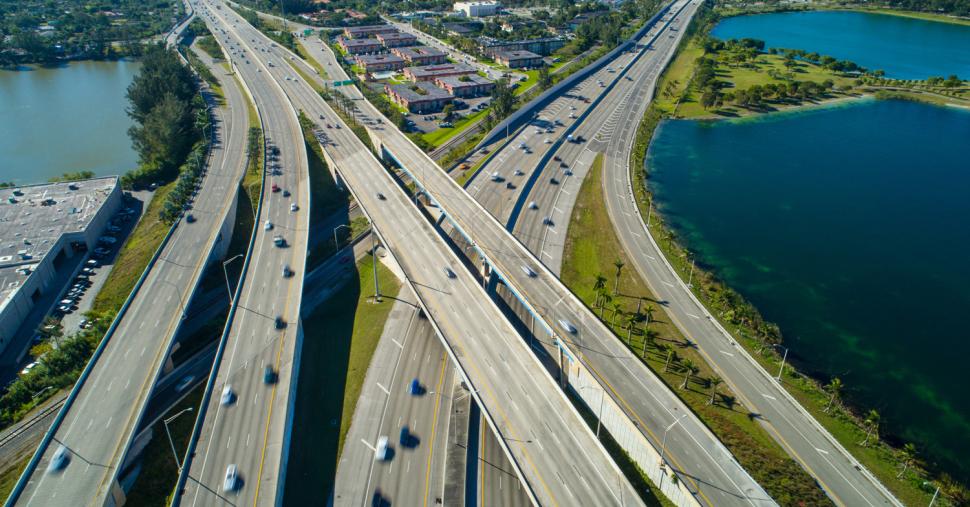“I like this car,” — Arnold Schwarzenegger (Terminator 3: Rise of the Machines)
The car in question, one assumes, being the innovative hydrogen-powered vehicle, championed by Mr Schwarzenegger himself during his stint as Governor of California. So, what happened? Will the so-called ‘hydrogen highway’ return with a vengeance (just like the Terminator); or is it ‘hasta la vista, baby’?
Back in 2004, the 38th Governor of California proposed a hydrogen highway — a stream of zero-emission vehicles gracing roads in place of planet-polluting petrol and diesel counterparts. So, why are we not all cruising round in hydrogen-powered motors? What went wrong (and what went right)?
Arnold’s California dreaming was on the right track — hydrogen power produces zero emissions, thus is far more planet-friendly than petrol or diesel. When Arnie rocked up in his hydrogen-powered Hummer, declaring, “...a modest beginning, but the promise of a revolution,’ he set the ball in motion to build a network of 100 hydrogen-refuelling stations. But the technology is expensive — hydrogen costs four times more than petrol[1], and people quickly realised that in order to be ‘green’ with a lower price tag, they should opt for a more wallet-friendly electric car rather than its hydrogen equivalent.
Neither electric or hydrogen-powered cars burn fossil fuels in order to run, resulting in zero emissions. However, an often overlooked point is that both hydrogen and electricity are made using methods that do burn these planet-polluting fuels, meaning the vehicles are not quite as green as they seem. Until we move over to an alternative way of producing hydrogen and electricity, there really is no such thing as a green vehicle. With those points in mind, it’s difficult to decide which is the better of the two to choose; both come with refuelling issues — hydrogen cars take just minutes to refuel, but are practically impossible to do so at home meaning a long journey is often required to locate the closest refuelling station. On the other hand, it is possible to recharge an electric car at home, but the process takes around eight hours. The choice comes down to convenience, and which fits better with the buyer’s lifestyle.
Many have bought into the hydrogen highway; it does still exist, albeit gaining less traction than initially projected. All except a small handful of the 7,800 hydrogen cars to have been manufactured exist in California, and the state has spent over $300 million over the past ten years on measures to increase this number: rebates to encourage people to buy or lease hydrogen-fuelled cars, construction of hydrogen-fuelling stations, and the subsidisation of the development cost of hydrogen-driven freight trucks. The issues that fettered the hydrogen highway are seemingly teething problems — the small number of hydrogen vehicles on the road in California means that exposure is relatively low, although this should rise during the Tokyo Olympics where hydrogen cars and shuttle buses will be showcased, and the Olympic torch with its hydrogen flame takes centre stage. There are very few models available, so for people who like a bit of variety in their driving life, hydrogen-powered vehicles slip beneath their radar. Although as demand rises, surely so will supply.
There is some concern surrounding the availability of fuel: the state has only 44 refuelling stations, mostly in densely populated cities, and many hydrogen-car owners were unable to source fuel last year following an explosion in a hydrogen factory[2].
Looking to the future, it seems that the hydrogen highway is set to undergo an extension: just last year, Hyundai revealed that it is planning to wean from fossil fuel-powered trucks to hydrogen-powered with its HDC-6 Neptune hydrogen fuel cell truck. Nikola Motor Co. will begin testing its semi-tractor next year, with Budweiser brewer Anheuser-Busch the first to use it in its fleet. Toyota, already on the highway with the Mirai passenger car, is set to take hydrogen power one step further by collaborating with truck builder Kenworth to develop ten zero-emission class trucks, using a $41 million grant from the California Air Resources Board. Global parcel delivery firm UPS is jumping right into the hydrogen pool, stating that, by 2025, it wants 40 percent of the fuel it uses to come from sources other than petrol and diesel.
The hydrogen highway remains open; unlike Arnie it doesn’t need to declare ‘I’ll be back’ because it never left us.
